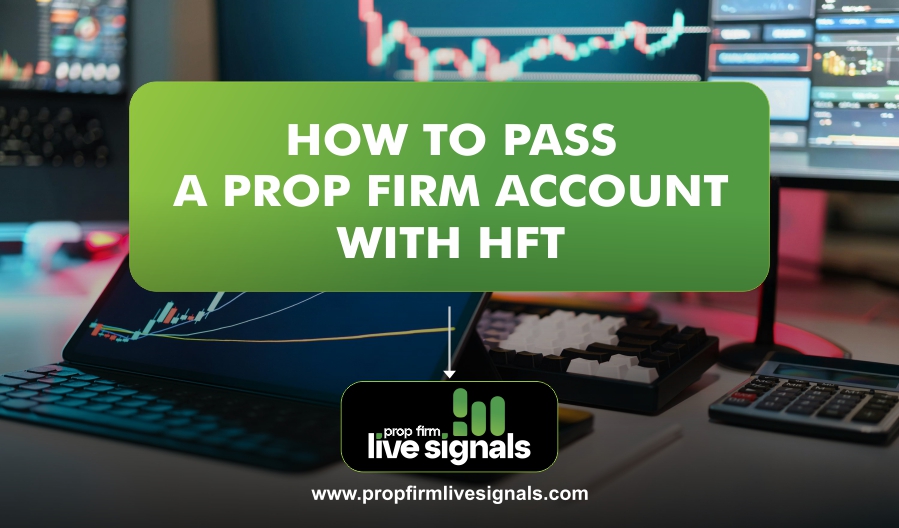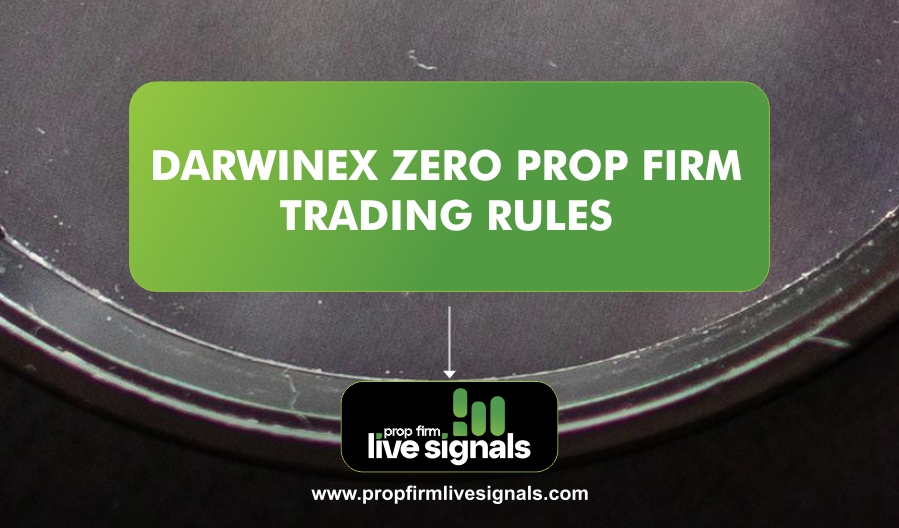High-Frequency Trading (HFT) is an advanced trading strategy that relies on sophisticated algorithms and lightning-fast execution speeds to take advantage of small price movements. Unlike traditional trading, where positions may be held for minutes, hours, or even days, HFT strategies involve executing hundreds or even thousands of trades within milliseconds. This approach allows traders to accumulate profits quickly and efficiently, making it a potential tool for passing a prop firm’s evaluation phase.
However, HFT is not a simple strategy to implement. It requires the right infrastructure, including low-latency connections, powerful trading algorithms, and a deep understanding of market microstructure. Moreover, not all prop firms allow HFT, and some impose restrictions on scalping, execution speeds, and order volume. Therefore, traders interested in using HFT to pass a prop firm evaluation must carefully choose the right firm and develop a well-optimized trading setup.
Key Phrases:
- Prop Firm Account: A funded trading account provided by a proprietary trading firm.
- High-Frequency Trading (HFT): A trading strategy that uses algorithms to execute a high volume of trades in milliseconds.
- Algorithmic Trading: The use of computer programs to execute trades automatically.
- Risk Management: Strategies to minimize potential losses while trading.
- Evaluation Phase: The process traders must pass before gaining access to a prop firm’s capital.
- Scalping: A trading strategy focused on making small profits from quick trades.
- Latency Arbitrage: A technique that exploits small delays in price movements.
- Order Execution Speed: The time it takes for a trade to be placed and executed.
Understanding Prop Firm Evaluations
Before diving into HFT, it is essential to understand the evaluation process of a prop firm. Each firm has different rules, but common requirements include:
- Profit Target – Traders must achieve a set profit percentage, usually between 5% and 10%.
- Drawdown Limit – There is a maximum amount of loss a trader can incur before failing the evaluation.
- Trading Days Requirement – Some firms require traders to trade a minimum number of days.
- Consistency Rules – Some firms limit the percentage of profit that can be made in a single day to encourage consistency.
Using HFT can be an advantage in passing these challenges because it focuses on high-speed execution and small, consistent profits.
How High-Frequency Trading Works
HFT involves trading a large number of orders in a short time to exploit small price differences. It relies on:
- Ultra-fast execution speeds (measured in milliseconds or microseconds)
- Automated trading algorithms
- Low-latency networks to reduce delays
- Market-making strategies to provide liquidity
- Statistical arbitrage to take advantage of price inefficiencies
Why Use HFT to Pass a Prop Firm Account?
- Quick Profit Accumulation – Many small trades can add up to reach the profit target faster.
- Limited Market Exposure – Since trades last for short durations, the risk of large drawdowns is reduced.
- Scalping Advantage – Some prop firms allow scalping, which aligns well with HFT.
How to Pass a Prop Firm Account with HFT
1. Choose the Right Prop Firm
Not all prop firms allow HFT or scalping. Research and choose a firm that permits high-frequency trading. Look at:
- Allowed trading strategies
- Execution speed and slippage
- Broker spreads and commissions
2. Use a Fast VPS (Virtual Private Server)
A VPS reduces latency, ensuring that trades execute in real-time without delays. Some benefits include:
- 24/7 trading capability
- Low ping connection to broker servers
- Increased execution speed
3. Select the Best Trading Algorithm
You will need a tested and reliable algorithm that aligns with HFT strategies. Factors to consider:
- Backtesting Results – Ensure it performs well in different market conditions.
- Order Execution Speed – Choose a script that places trades in milliseconds.
- Risk Management Features – Include stop-loss settings to prevent large losses.
4. Optimize Risk Management
- Set Small Trade Sizes – Since HFT relies on many small trades, do not risk large amounts per trade.
- Monitor Drawdown Limits – Stay within the allowed loss limits set by the prop firm.
- Avoid Overtrading – Some prop firms have restrictions on daily trading volumes.
5. Use Low-Latency Data Feeds
Market data feeds provide real-time price updates. A low-latency feed ensures accurate and fast decision-making.
6. Test in a Demo Account First
Before attempting to pass an evaluation, test your HFT strategy in a demo account to ensure:
- The algorithm works as expected.
- Execution speed meets requirements.
- Risk parameters are optimized.
Challenges of Using HFT in Prop Firm Accounts
While HFT has advantages, there are also challenges:
- Broker Limitations – Some firms have restrictions against HFT.
- Slippage – Delays in execution can reduce profitability.
- Data and Execution Costs – Advanced infrastructure (VPS, low-latency feeds) can be expensive.
- Trade Restrictions – Some firms set limits on the number of trades per day.
Conclusion
Passing a prop firm evaluation with HFT is possible with the right setup, strategy, and risk management. Focus on choosing a firm that supports HFT, use a fast VPS, deploy a well-tested algorithm, and follow strict risk control.
By understanding the evaluation process and implementing high-speed strategies effectively, you can increase your chances of securing a funded account and scaling your trading career.
Frequently Asked Questions (FAQs)
Can I use HFT on any prop firm account?
No, not all prop firms allow HFT. Check their trading rules before starting.
How much capital do I need to start HFT in a prop firm?
Most prop firms provide funding, but you may need money for a VPS, algorithm setup, and initial fees.
What is the best VPS for HFT trading?
Look for a VPS with a low ping (less than 5ms) to your broker’s server for the fastest execution.
Can I manually trade using HFT strategies?
No, HFT is fully automated and requires algorithmic execution. Manual trading is too slow for high-frequency trading.
How do I ensure my HFT algorithm works effectively?
- Backtest extensively on historical data.
- Run live tests on a demo account.
- Optimize for speed and risk management.
Is HFT riskier than other trading strategies?
HFT has lower exposure per trade, but it requires strict risk management. A poorly designed algorithm can lead to quick losses.




